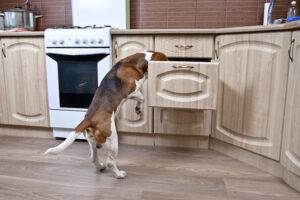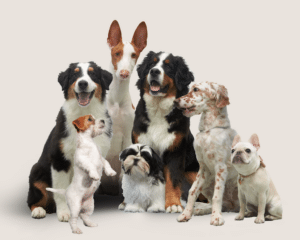The time-honored phrase “a dog is man’s best friend” isn’t always immediate. Getting a new puppy means taking on a new role and establishing a new relationship. Bonding with a pet is a lot of fun, but it takes plenty of hard work too. Putting in this effort can make for a smoother transition into pet ownership and reduce headaches for you and your dog for years to come.
Get Your Home Ready for Your New Dog
When your puppy comes home, your space should be ready for them. In addition to stocking up on puppy toys, treats, and other playtime essentials, make sure to carefully “puppy-proof” each accessible room. Secure electrical and drapery cords, cover up electrical outlets, and carefully lock or secure any doors or drawers that might get your puppy into trouble.
©duncanandison – stock.adobe.com
Show Your Dog Around
Why wait to introduce your puppy to their new collar and leash? Leading them around indoors is an easy way to familiarize them with both their new surroundings and the experience of going for walks. It’s a safe way to ensure you’ve got a close eye on them as they check out the sights and smells of their new home.
Embrace the Learning Process
You and your puppy have a lot to learn about bonding and living with one another. The sooner you both embrace the process of trial and error, the better. When setting and enforcing house rules, always remember to be patient and consistent.
Introduce Your Dog to Your Friends
The experience of bringing home a puppy and growing into a pet care expert is always better when it’s shared with family and friends. You don’t want to overwhelm them with visits from strangers, but you can always post some photos or videos of them on your social media accounts to share your puppy with people you care about.
Be Fully Engaged in Your Interactions
When it comes to bonding with your dog, it’s important to truly commit. Try not letting your phone steal your attention during walks or games of fetch. Your dog needs to know that they’ve got your full attention and that they can rely on you to meet their needs.
Learn To Understand Their Body Language
You and your dog can’t speak to one another, but that doesn’t mean you can’t communicate. As you spend time together, make sure to watch your dog closely to begin reading their body language. They’ll provide regular indicators of how they’re feeling that can guide you through training and bonding.
Introduce and Reinforce a Routine
New experiences can overwhelm a young dog. To minimize stress and optimize the housetraining process, establish routines early and often. Better yet, teach your dog to associate these routines (and the appropriate behavior) with positive reinforcement. Some additional affection or a training treat can help gain your dog’s trust and attention, while discouraging bad behaviors such as tugging at the leash during walks or eliminating indoors.
©Dyrefotografi.dk – stock.adobe.com
Be Ready for Sleepless Nights in the Beginning
New puppy owners should count on having their sleep interrupted for some time after bringing their dog home. However, nighttime bathroom breaks are much simpler when dogs and their owners share a bedroom. Depending on your dog’s size and temperament, you may prefer to crate them bedside, or purchase a puppy-sized dog bed for an exercise pen. Whatever your arrangement, close proximity accomplishes a dual purpose. In addition to reducing the risk of accidents, it can strengthen the bond between you and your dog.
Apply The Bonding Lessons You’ve Learned
As you’ve probably gathered, building a trusting, mutual bond with a new dog takes time and effort. Don’t get discouraged if and when you both experience setbacks. With patience and persistence, your bond will grow stronger the more time you spend together.







